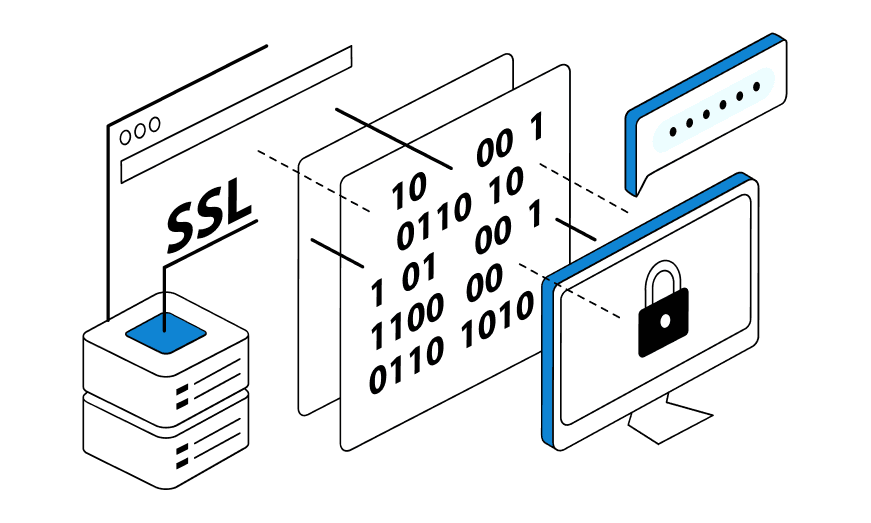
Gathering information from websites is an important part of working in e-commerce, marketing, analytics, and many other fields. Companies parse (analyze with scripts) thousands of pages every day to track competitors’ prices, update catalogs, search for reviews or monitor brand mentions. But as the number of requests grows, there is another side – blockages from websites and slowing down systems.
This is where proxies come into play – tools without which data parsing acceleration becomes almost impossible. They not only protect against restrictions, but also allow scaling processes, making data collection stable, safe and much faster. Next, let’s talk about why you need proxies for parsing.
Why parsing without proxies is a path to blocking and errors
Many sites are configured to recognize suspicious activity – for example, too frequent requests from a single IP address. If a bot sends dozens or hundreds of requests per minute, the server may consider it an attack and block the IP. As a result, the script “breaks”, data is not received, and the work is stopped.
Without a proxy, data collection becomes a game of luck. Using a single IP is like walking through a minefield: you can accidentally damage the site’s protection and get banned. And if parsing is performed simultaneously from several devices or is launched regularly, the risk increases many times over.
That’s why e-commerce proxies have become the standard. They help distribute the load among dozens or hundreds of IP addresses, mimicking the behavior of different users and bypassing anti-bot protection. This not only reduces the likelihood of blocking, but also allows you to run parsing in parallel, which has a direct impact on speeding up data parsing.
How proxy servers help to speed up and secure parsing
A proxy server is an intermediary between the parser and the target site. Instead of sending the request directly from your IP address, the parser uses it. This way, each request is sort of “masked”, creating the illusion of many different users.
But how do proxies help you parse faster? It’s simple: by distributing requests between different IP addresses, you can run many threads simultaneously. This significantly increases parsing speed and allows you to process large amounts of data in a short time. Instead of waiting for a pause between requests (to avoid blocking), you can safely run in parallel.
Besides speeding up, proxies also increase the reliability of the process. When using anonymous or rotational variants, the parser leaves no “digital footprint” – the site cannot track the source of activity. This is especially important when collecting data from sites actively fighting bots. Security and stability become critical for large-scale tasks, especially in areas where delayed information can affect profits.
As a result, they are becoming not just a technical add-on, but a must-have tool for those who want to parse efficiently, quickly and risk-free.
What types of proxies are best for data parsing
Choosing just “some” proxies is not enough. For proxy data parsing to be truly effective, you need to consider your goals, scope, data sources, and technical features. Different tasks require different approaches, and the best proxy for Google Search may not be suitable for collecting data from marketplaces or social networks. Let’s see what’s what.
Data-centric, mobile and resident: differences and applications
Data-centric are the fastest and cheapest. They are perfect for tasks where speed is important: price monitoring, mass updating of databases, testing. But sites more and more often recognize such IPs as bots and ban them.
Resident ones look like regular users. They are connected through real ISPs and are perfect for parsing sites with anti-bot protection. They are the ones more often used as proxies for market research and monitoring competitive sites.
Mobile – elite. They use IPs of mobile operators, which means that they bypass almost any protection. They are ideal for complex tasks: parsing Google Search, social networks, systems, de aggressive protection from bots.
Conclusion: if your budget is limited – start with data centers. If you need stability and quality – resident centers. If you need to pass through concrete – mobile.
Geo-proxies and stability: why take location into account
IP address location is a critical factor. Many sites produce content depending on the region. If you are parsing prices from the USA and your proxy is from Indonesia, the results will be incorrect.
They allow you to “disguise” yourself as the right country, city or even mobile provider. This is especially important when parsing data from proxies for localized marketing research: you can collect exactly the information that your target audience sees.
In addition, geo-targeting helps to increase stability – IPs close in geography to the server get fewer lags and bans.
HTTP(S) vs SOCKS: which protocol is better for a parser
Two popular protocols – HTTP(S) and SOCKS – work differently:
- HTTP(S) – proxies are good for working with websites, they process HTML data quickly, but can limit the type of information transmitted.
- SOCKS5 is a universal protocol. It is suitable for any tasks: from browsing to downloading files. It is more often chosen for deep parsing, especially when it comes to complex sources or non-standard formats.
If your task is parsing Google Search, it is better to use SOCKS with IP rotation and US geolocation. For simple sites HTTP(S) will do as well.

How to choose a proxy for parsing: tips and criteria
If you are seriously engaged in parsing – not only the speed of work depends on the right choice of proxy, but also the ability to generally perform the task without failures and blockages. Anonymous parsing via proxy is not a luxury, but a necessary condition for stable access to data.
Here is what you should pay attention to when choosing the best proxies for parsing:
Proxies should be highly anonymous. This means that they do not reveal either your real IP or the fact of using a proxy. The optimal option is “elite” ones that completely hide the user.
Resident and mobile IPs look like traffic from real users, so they are better suited for parsing data, especially from sites where bot protection is active. This reduces the chance of blocking to a minimum.
If you are collecting information from region-specific sites, it is important to use proxies with IPs from the correct country. For example, for Google Search in the US – US proxies, for local e-commerce – the appropriate region. This helps you bypass restrictions and get relevant results.
The quality of the connection directly affects efficiency. Slow or unstable ones will cause timeouts, errors and retries. This reduces speed and increases the load on the system.
For large-scale and anonymous parsing, you need the rotation function, which automatically changes the IP address at specified intervals or after each request. This protects against recognition and blocking.
HTTP(S) proxies are suitable for parsing common sites, while SOCKS5 is a more versatile and secure option, especially if you need to work with non-standard data or bypass complex security.
How to avoid being banned for web parsing? Use high-quality, anonymous, geolocation proxies with rotation support – and forget about blocking.
Step-by-step instructions on how to use proxies for parsing
Understanding the theory is good. But in practice, it’s the right setup that decides a lot. Below is a step-by-step guide that will help you integrate proxies and avoid getting banned when parsing.
Setting up proxies in a parser
Most modern parsers (for example, Scrapy, ParseHub, Octoparse) support working with proxies “out of the box”. To configure:
- Get a list from the selected provider (format is most often: IP:port:login:password).
- Enter these data into the proxy server settings in the parser.
- Specify rotation parameters – if the tool supports it.
- For example: change IP every N requests or seconds.
Important: if you parse from several streams, specify different proxies for each of them.
Testing the connection and verifying the IP
Before you start mass uploading, it is important to make sure the proxies are working correctly:
- Use online services to verify the IP and its geolocation (e.g., whatismyipaddress).
- Send a few test requests through a parser.
- Check for blockers or captchas.
The testing phase helps identify “bad” or blocked proxies before the main work begins.
Use proxy managers for automation
To avoid setting everything up manually and wasting time on monitoring, use proxy managers. These are special tools that:
- Automatically switch IP addresses (IP address rotation for proxies).
- Monitor the state of the connection.
- Replace non-working addresses.
- Support load balancing between threads.
Some popular solutions are ProxyMesh, Bright Data Proxy Manager, Smartproxy Extension. For parsing data for machine learning, where stability and scale are important, such tools are a must-have.
Conclusion: which proxies really speed up parsing
If you want to avoid getting banned for parsing and collect large amounts of data, forget about single free IPs and dubious sources. True acceleration and stability comes from three factors:
- Type of proxy – resident, mobile or data-centric (depending on tasks).
- Support for geolocation and IP rotation – a must for large-scale or sensitive sites.
- Proper integration with parsing and automation tools.
This is especially relevant if you work in e-commerce, marketing analytics – proxies for parsing data for machine learning allow you not just to collect data, but to do it efficiently, scalably and securely.









